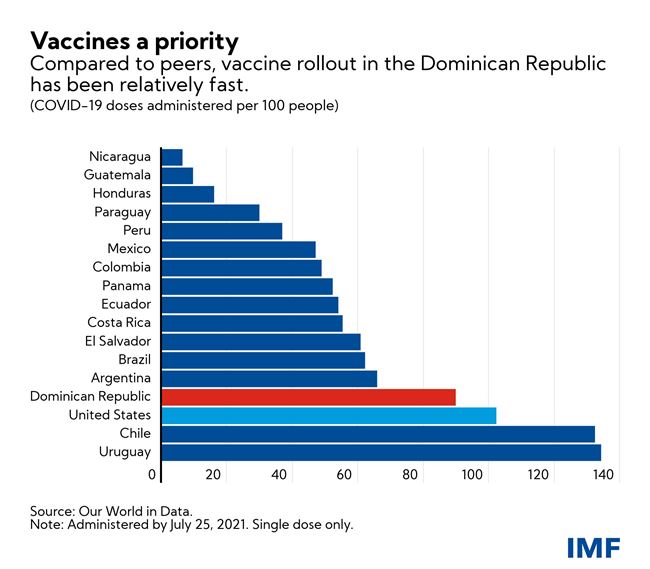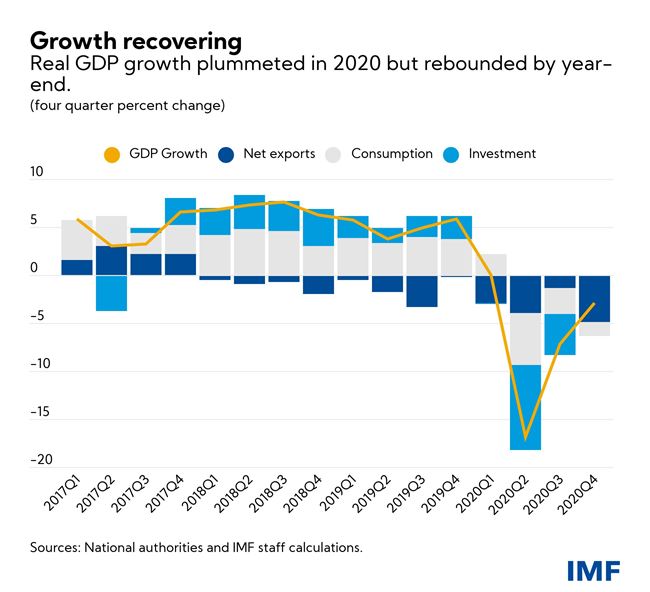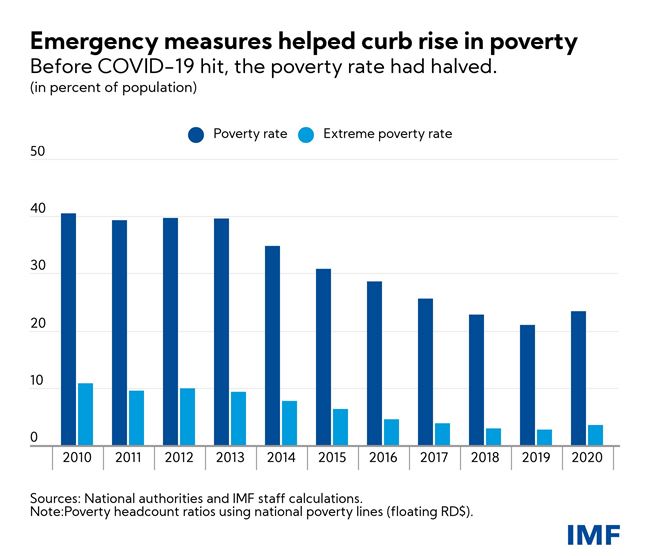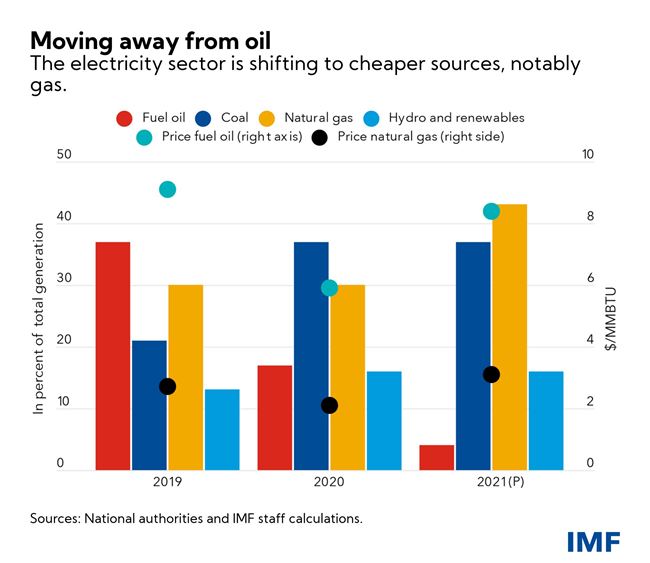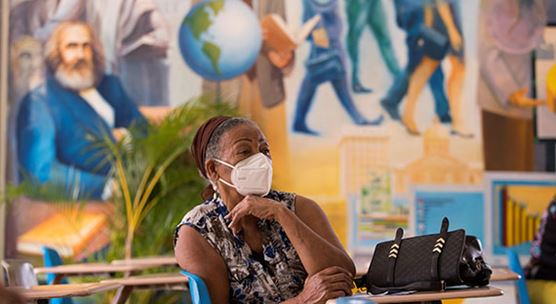
A woman waits her turn to receive a COVID-19 vaccine at a medical center in Santo Domingo, Dominican Republic. The country’s vaccine rollout has been relatively rapid (photo: Orlando/Barria/EFE/Newscom)
Four Charts on the Dominican Republic’s Crisis Response and Recovery
July 28, 2021
As one of the fastest-growing and most dynamic economies in Latin America and the Caribbean, the Dominican Republic entered the COVID-19 crisis in a relatively strong position.
Related Links
Despite the toll of the pandemic, smart policy making and continued access to markets allowed the country to implement a response plan that has put the Dominican Republic on a path to recovery.
Here are four questions and charts on the country’s crisis response and priorities:
- What was the policy response to the crisis? The country’s response has adjusted to the needs created by the pandemic. Initially, with the economy in lockdown, the response prioritized health spending and broad transfers to low-income families and the unemployed, and targeted tax relief. The Central Bank reacted decisively through interest rate cuts and ample liquidity provision that supported credit and activity. As the economy began to recover, policies became more targeted. Broad support programs ended in April 2021, but temporary social programs were gradually merged into a new social assistance program. Support to the unemployed focused on the most affected sectors, notably tourism. To support a safe reopening, new health spending focused on the rollout of vaccines. The government has set a target of immunizing 7.8 million people—over 70 percent of the population. Around 51 percent of the target population has received two vaccine doses, as of July 25, 2021.
- How did the situation evolve after the initial impact of the pandemic? GDP contracted by 6.7 percent in 2020, weighed down by the service sector, particularly tourism. However, the economy started recovering towards the end of the year and has been gaining momentum. Activity in most sectors was above pre-pandemic levels by early 2021, supported by strong foreign investment and a buoyant US economy. Remittances have also grown, supporting consumption. Tourism re-opened but its recovery is expected to be more gradual as it depends on the lifting of travel restrictions around the world. Total employment fell in 2020 but fully recovered in manufacturing by early 2021.
- How has the pandemic affected social outcomes? What is being done to protect the vulnerable? Over the past decade, the poverty rate halved thanks to strong growth and targeted policies. However, as in other countries, job losses, declining wages and school disruptions have thrown many people back into poverty. Healthcare coverage was expanded, and various temporary support programs were introduced, which prevented more people from dropping below the national poverty threshold. The government also created Supérate, a centralized social assistance program that aims to lift those receiving benefits out of poverty by facilitating their transition into the labor market and supporting them with a monthly transfer. A targeted employment support program for tourism workers was also launched. The government is working to improve the quality of education and reduce skill and gender gaps.
- What are the country’s post-pandemic priorities? Going forward, good sequencing of actions will be important. In the short-term, initiatives that improve institutions, transparency, and governance—such as fiscal responsibility legislation and central bank recapitalization—can further enhance the effectiveness of policies. Once the recovery is well underway, reforms in the fiscal and electricity sectors will need to be prioritized. Compared with peers, the Dominican Republic’s tax collection is relatively low. The tax system can be simplified, the tax base broadened and exemptions streamlined. Recent reforms to the electricity sector can also help to strengthen the country’s fiscal position, including through the transition from oil to cheaper energy sources, such as gas. The electricity sector will need to transition to a cost-recovery pricing tariff scheme and subsidies will have to be better targeted to ensure they go to vulnerable households only.








